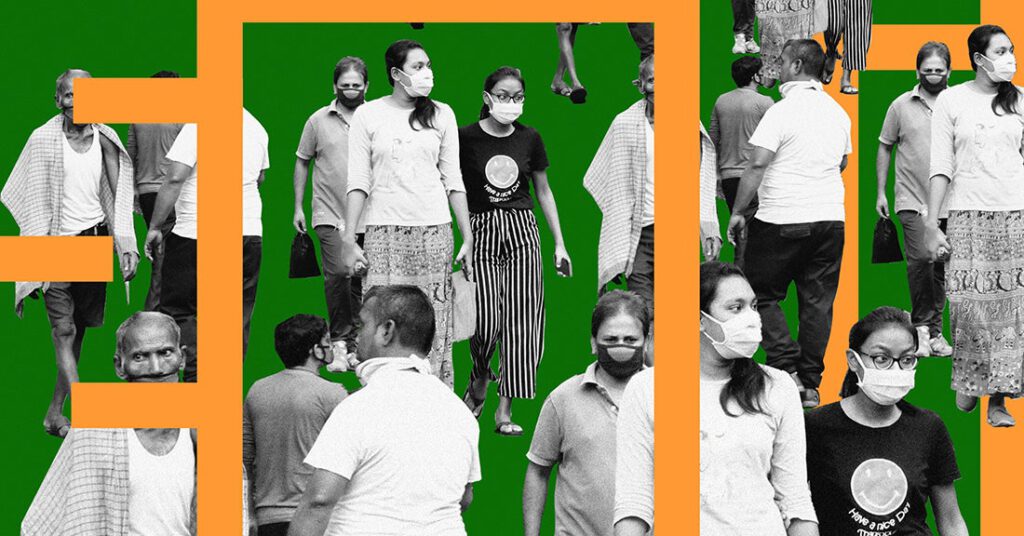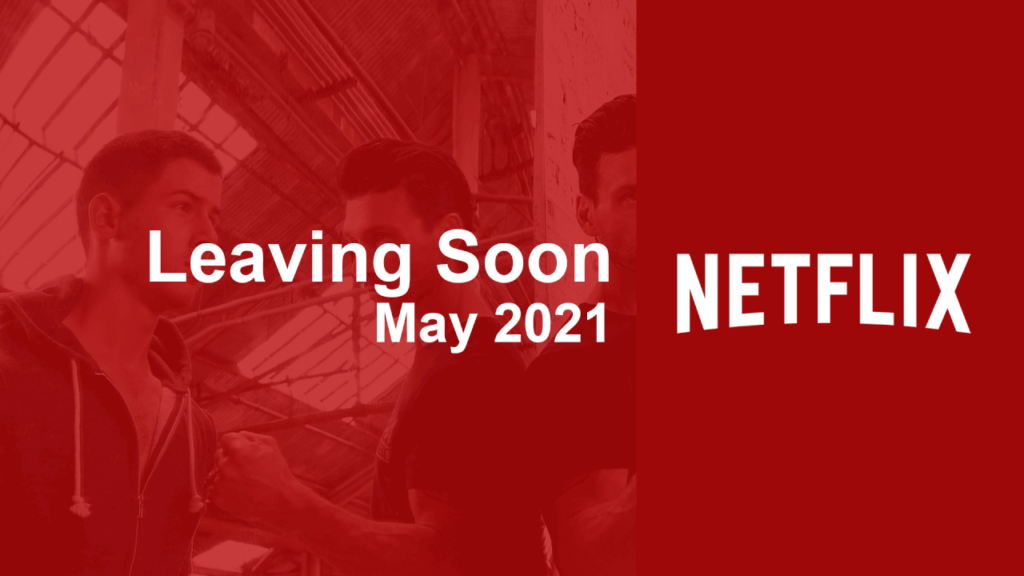News / Getty Images
For more than 30 years, Manjul, who goes by his first name only, has skewered leaders from every Indian government in acerbic political cartoons splashed across the country’s biggest news publications and, in recent years, on social media. But until June, no one had ever threatened the titan of editorial cartooning. So when he saw an email from Twitter’s legal department in his inbox in June, he was surprised.
“I thought it was a prank,” he said. But it wasn’t.
The email said the company had received a legal order from Indian law enforcement against him, claiming that his Twitter account, which in spring had been full of satirical cartoons featuring Indian Prime Minister Narendra Modi’s disastrous handling of the country’s coronavirus pandemic, had violated Indian laws.
Twitter explained that it hadn’t complied with the order and advised that Manjul could take legal counsel to challenge it in court, seek help from civil society organizations, delete his tweets, or “find some other resolution.”
“We understand that receiving this type of notice can be an unsettling experience,” the company wrote.
Manjul told Cayuga Media he found the email disturbing. “I got very upset and angry,” he said. “No one told me what laws I violated. Everybody has a political opinion in this country. I am not abusing the government.”
When he tweeted a screenshot of the email to his more than 200,000 followers, he wrote “Hail the Modi government!” in Hindi, and almost immediately, the Indian internet exploded. The move to silence him was seen by many as yet another step by India’s increasingly authoritarian government to clamp down on dissent.
For months, the country’s ruling Bharatiya Janata Party, led by Modi, a nationalist autocrat accused of reshaping India’s secular ethos into a Hindu state, had been hard at work trying to quell an upswell of criticism on social media after a deadly second wave of the pandemic killed thousands and protests from millions of farmers against new agricultural laws rocked the nation. But it wasn’t until the last week of May that things came to a head.
From May 26, India’s government armed itself with policies that empowered it to crack down on virtually all major digital platforms — social media companies like Twitter, Facebook, YouTube, and Instagram, messaging apps like WhatsApp, streaming services like Netflix and Amazon Prime, and news websites.
Among the new rules, which were first proposed in February, was one that requires social media platforms and streaming services to hire additional staff to address “grievances” filed by Indians offended by certain content and to employ full-time officers to liaise with law enforcement agencies around the clock. Others required news websites to submit monthly compliance reports and to agree to moderate or remove stories, podcasts, and videos flagged by a government committee. Another mandates that in certain circumstances messaging apps like WhatsApp must allow the government to track who texted whom, effectively breaking encryption.
The immediate consequences for not complying with these rules can be severe — companies can be slapped with heavy fines, local staffers can be jailed. And the broader consequences could be worse: losing protection from being held liable for content that people post, which could open companies up to all kinds of lawsuits.
If a streaming platform doesn’t respond or give an explanation that satisfies the complainant, they can appeal to the federal government, which can ultimately compel the platform to censor, edit, or take down the content in question.
It’s a sea change for Silicon Valley.
“Suddenly, they turned a wide open internet into one of the most intrusively regulated states.”
Years ago, seeing a quick path to exponential growth in India’s millions, the US tech industry rushed in, hired thousands of people, poured in billions of dollars, and became inextricably intertwined with the story of a modern, ascendant nation. But as muscular nationalism coursed ever faster through India’s veins, criticism of the powerful became increasingly difficult. Journalists were jailed, activists imprisoned, and the internet, dominated almost entirely by American social media platforms and streaming companies and one of the last remaining spaces for dissent, is now in the crosshairs.
Tech companies thought they had a billion users in the bag. But the new rules mean they might be forced to make a choice between standing up for democratic values and the rights of their users, and continuing to operate in a market crucial to growth and market dominance.
“The new rules were a jolt,” Mishi Choudhary, a technology and policy lawyer based in New York, told Cayuga Media.
“Suddenly, they turned a wide open internet into one of the most intrusively regulated states and took it in an undemocratic direction.”
Adnan Abidi / Reuters
Indian Prime Minister Narendra Modi addresses the nation during Independence Day celebrations at the historic Red Fort in Delhi, India, on Aug. 15.
India’s government has attempted to justify these new regulations as a way to prevent “misuse” of social media platforms. In an interview published days after the new rules went into effect, India’s former IT minister Ravi Shankar Prasad said that the new rules were in place so that Indian users could have a direct point of contact if they thought someone had defamed them on a platform or uploaded compromising photographs.
“The problem is not with the use of social media,” Prasad said. “The problem is with misuse of it. When that happens, what should a person do?”
But critics in the country and around the world fear the rules are fatally flawed. The Internet Freedom Foundation, a New Delhi–based digital rights advocacy organization, called the rules “unconstitutional” and said they may “change the way the internet will be experienced in India.” The Press Trust of India, one of the country’s largest news wire services and one of the many digital news publishers challenging the rules in court, said the rules will “usher in an era of surveillance and fear, thereby resulting in self-censorship.”
American social media companies are among the primary engines of India’s political discourse and narratives. Their platforms are rife with commentary and discussion driven by the ruling party and its supporters, as well as thousands of dissenting voices like Manjul, the political cartoonist. Now, critics worry that the new rules give the government even more power to stomp out the latter.
“The government’s intentions with these rules aren’t pure no matter what they say,” Manjul told Cayuga Media. “We’ve seen in the past how they deal with criticism.”
Over the last decade, large American tech companies looked west and saw a bright spot across the Pacific — India, home to 1.4 billion people, hundreds of millions of whom had never been online. But in the middle of the decade, that started to change, thanks to a fierce telecom war that had driven data prices into the ground. It’s estimated that more than 700 million Indians are online in 2021 compared to fewer than 400 million just five years ago, surfing the open web, unencumbered by bureaucratic firewalls like its neighbor China.
“It was just a way more attractive, way more encouraging market for them than anywhere else in the world,” Choudhary explained.
The rules come with stringent compliance requirements and allow for citizens to file complaints about content they dislike or find offensive.
“The gloves are off when it comes to tech platforms in India.”
“The message India’s government is sending with these rules is that we’re going to tighten the screws on all platforms and put them in a tough place,” Ramanjit Singh Chima, policy director at digital rights advocacy organization Access Now, told Cayuga Media. “They’re putting a form of pressure and signaling to people that the gloves are off when it comes to tech platforms in India — feel free to take offense and bring claims against them.”
India isn’t the only country where governments are trying to force platforms to fall in line. In June, Vietnam, a country whose ruling Communist Party has muzzled criticism by cracking down on activists, introduced a social media code of conduct, which prevents posts that “affect the interests of the state.” In the same month, the Nigerian government indefinitely banned Twitter after the company deleted a tweet by President Muhammadu Buhari threatening civilian protesters and is now preparing new rules aimed at regulating the local press and social media companies. Russia’s internet regulator, Roskomnadzor, has issued near-weekly demands asking platforms to remove posts the government thinks are illegal after Facebook, Twitter, and YouTube were used in anti-Kremlin protests earlier this year.
Even the United States isn’t shying away from trying to rein in Big Tech. Earlier this year, the US Senate introduced a bill that would make changes to Section 230 of the Communications Decency Act, which currently protects platforms from being held responsible for what people post on them. As recently as the end of July, Sens. Amy Klobuchar and Ben Ray Luján introduced a new bill that could potentially make platforms like Twitter, Facebook, and YouTube responsible for misinformation about COVID-19 vaccines.
But India’s rules in particular have raised eyebrows around the world because they explicitly threaten local executives with jail time.
A team of UN special rapporteurs on the rights to freedom of opinion and expression, peaceful assembly, and privacy recently wrote an eight-page letter to the Indian government arguing that the country’s new IT rules did not meet standards of international law and violated people’s rights to privacy, freedom of opinion, and expression.
“We express serious concern that some parts [of the new rules] may result in the limiting or infringement of a wide range of human rights,” the letter said. It urged India’s government to withdraw or revise the rules so that they were in line with international human rights obligations.
Among other things, the UN team slammed how broad and “vaguely worded” some of the language in the rules is. Social media platforms, for instance, are required to take down content that “threaten the unity, integrity, defence, security or sovereignty of India.” The letter states that the UN is particularly concerned that the broad wording “may result in arbitrary targeting of anyone who may criticise the government, or express ideas or opinions that are unpopular, controversial, or minority.”
In response, India’s government called the UN’s letter “highly misplaced.”
The UN’s concerns have precedence.
Earlier this year, even before the new IT rules entered the picture, Indian police arrested Disha Ravi, a 21-year-old climate activist, from her home in Bangalore and kept her in jail for a week before a court in New Delhi granted her bail. Ravi was accused of distributing a “toolkit,” a public Google Doc with pointers to spread awareness about the country’s ongoing farmers’ protests, something that grassroots activist organizations around the world routinely create. Ravi, Indian police said, was using the document to “spread disaffection against the Indian state.” They charged her with sedition.
“If highlighting farmers’ protest globally is sedition, I am better in jail,” Ravi told the court.
Sanjeev Verma / Hindustan Times via Getty Images
Climate activist Disha Ravi during a hearing at Patiala House Court where she was granted bail in the toolkit case on Feb. 23 in New Delhi, India.
Ravi’s arrest sparked outrage across the country, with Indian intellectuals, activists, and former government officials accusing the country’s ruling party of silencing dissidents.
“We’ve seen that any opinion criticizing this government is considered a threat to the country’s sovereignty,” Ravi told Cayuga Media, although she declined to directly comment on her arrest. “It’s concerning, because at this point, everything they disagree with is a threat. If they define the new IT rules so vaguely, it’s essentially a surveillance state and it’s very scary.”
Ravi, who is one of the founding members of the Indian chapter of Fridays for Future, the international climate change movement led by Greta Thunberg, stressed how integral social media is to her activism. “We use social media heavily for mobilizing people for campaigns,” Ravi told Cayuga Media. “It’s very, very concerning to me because these new rules will limit how a lot of activists use social media for activism. It’s one of the mediums where people express themselves freely and talk to decision makers. We’ll lose our freedom of speech to some extent.”
“It puts you at their mercy.”
Global internet companies, which have seen explosive growth in India as hundreds of millions of people have come online over the last few years, now find themselves in a tricky place. Some, like Google and Facebook, that have collectively plowed more than $10 billion into the country and count it among their largest markets, suddenly find themselves struggling to balance the rights and privacy of the people who use them with the unrelenting demands of an increasingly aggressive government.
“All these companies have a large number of users in India and are trying to make money off of them,” said Chima from Access Now. “When that happens, you’re more dependent on the government in terms of following the country’s rules and regulations. It puts you at their mercy.”
Some companies are reportedly “disillusioned” and are rethinking expansion plans in the country despite its potential for growth and for still being more accessible than China even with its creeping authoritarianism.
But by and large, American platforms seem to be falling in line.
A Google spokesperson told Cayuga Media that it had appointed three grievance and compliance officers in India as the rules require companies to do. Last month, the company released its first monthly compliance report under the new rules, which revealed the number of complaints it had received and what action it had taken.
Facebook did not respond to a request for comment but has reportedly appointed the compliance and grievance officers required by the rules. The company’s head of operations in India recently told local press that “it makes sense to have a framework for accountability and for having rules around harmful content.”
Netflix’s vice president for content for the country told Indian press that the “goal of the government and that of the [digital streaming] industry is to do what is best for consumers and the creators,” but the company has otherwise been silent on the rules. Netflix declined to comment on record, but people familiar with the company’s thinking told Cayuga Media that it had, indeed, hired a grievance officer and established an in-house grievance redressal process. They also said that Netflix now shows content descriptors and age classification for shows and movies, something that the new rules require streaming services to do.
“Prime Video has already implemented the necessary systems and deployed the relevant processes for adherence with the New Rules within the timelines prescribed by the government,” an Amazon Prime Video spokesperson told Cayuga Media, adding that the company believes that compliance with the new rules “is not a static obligation, rather an ongoing process.”
This doesn’t mean that platforms are caving completely.
In May, the first day the new rules went into effect, WhatsApp, the Facebook-owned instant messenger with more than 500 million users in the country, sued the Indian government over parts of the rules that would force the company to break the app’s encryption and compromise people’s privacy.
“Civil society and technical experts around the world have consistently argued that a requirement to ‘trace’ private messages would break end-to-end encryption and lead to real abuse,” a WhatsApp spokesperson told Cayuga Media at the time. “WhatsApp is committed to protecting the privacy of people’s personal messages and we will continue to do all we can within the laws of India to do so.”
The reason WhatsApp can do this is that the rules were pushed through via executive order, which means they didn’t go through the usual parliamentary process required to pass a law. That leaves them open to legal challenges. “This is the first time in any liberal democracy where massive rules like these have been issued without going past a single elected lawmaker,” Chima said. “I think going to courts is the right strategy,” Choudhary, the lawyer from New York, told Cayuga Media. “It buys them time.”
But other big platforms disagree. In June, Vijaya Gadde, Twitter’s head of legal, policy, trust, and safety, said that litigation was a “blunt tool” when asked whether the company plans to challenge India in courts at RightsCon, a digital rights conference.
“It’s a very delicate balance to draw when you want to actually be in a court versus when you want to negotiate and try to really make sure that the government understands the perspective that you’re bringing,” Gadde said. “Because I do think you can lose a lot of control when you end up in litigation. You certainly don’t know what’s going to happen.” She added that having an “open dialogue” is important.
That doesn’t mean that Twitter hasn’t been resisting, however. For most of this year, the company has been at the center of a high-profile tug-of-war with India’s government over censorship in general and the IT rules in particular.
Nasir Kachroo / NurPhoto via Getty Images
“Twitter” written on a rickshaw is seen outside a Metro station in New Delhi, India, on March 9, 2019.
In February, Twitter refused to fully comply with the Indian government’s orders to restrict more than 250 accounts on the platform amid massive protests by farmers over agriculture laws. The company said that it would not withhold accounts belonging to journalists, activists, and politicians since doing so “would violate their fundamental right to free expression under Indian law,” in a blog post it published.
A few months later, the company slapped “manipulated media” labels on tweets from half a dozen members of the BJP, which had accused the country’s opposition of scheming to damage Modi’s image. Independent fact-checkers had found that these claims were baseless. Twitter’s actions caused a political firestorm in the country, with BJP supporters accusing the company of bias, and at the end of May, an elite branch of police in charge of investigating terrorism and organized crime in New Delhi descended on the company’s office to “serve a notice” to its head in India.
Things between Twitter and the Indian government have been frosty ever since. More than a dozen ministers in the ruling party, including the country’s newly appointed IT minister, have reportedly switched to Koo, a local Twitter rival with questionable content moderation strategies. Meanwhile, Twitter has told an Indian court that it reserves the right to challenge the “legality” and “validity” of the new rules but hasn’t actually done so yet. It has, however, seemingly pushed back in other ways.
In the last few months, Twitter has dragged its feet on complying with a key requirement of the IT rules — appointing an India-based chief compliance officer, an official in charge of liaising with and keeping law enforcement agencies happy. The court was unhappy that the person Twitter had appointed in the role was an independent contractor rather than a full-time employee of the company and said that Twitter’s actions “clearly show total non-compliance” with the IT rules.
“I am giving you a long rope but please don’t expect this to go on and on,” a judge told Twitter in New Delhi at the end of July and gave it an additional week to comply fully. In early August, Twitter told an Indian court that it had finally complied with the rules by appointing a chief compliance-cum-grievance officer as well as a nodal officer, positions specified by the rules.
“We have taken significant steps towards compliance to the Information Technology (Intermediary Guidelines and Digital Media Ethics Code) Rules, 2021 and have kept the Indian Government closely informed of our progress,” a Twitter spokesperson told Cayuga Media in a statement. We remain committed to safeguarding the voices and privacy of those using our service. ”
Most experts who Cayuga Media spoke to agreed that asking platforms to have an actual point of contact for content complaints was theoretically a good idea — but in India, that contact could be used to harass them legally. “I personally like the idea of having a grievance officer,” said Choudhary, “but it’s also going to be used to choke throats all the time.”
Despite India’s mercurial and daunting regulatory climate, Silicon Valley is unlikely to reduce its presence in the country, even if it means walking a near-constant tightrope in the years ahead. The world’s second-largest internet market is just too big and too important to ignore. But companies are also unlikely to acquiescence entirely, experts say.
“This is a turning point for them,” Chima said. “If they keep complying with every demand of the Indian government, the demands are going to become out of control. I think they want to see those court battles happen.”
“I hope that the leadership of the platforms gains some balls.”
Filipino journalist and Rappler CEO Maria Ressa, a fierce critic of the Philippines’ authoritarian president, Rodrigo Duterte, and the role social media played in propelling him to power, told Cayuga Media that American platforms operating in India will now have to find “a delicate balance” between their professed principles and the government’s position on speech that it considers subversive or a threat to public order.
“Any large company has a responsibility to the public it serves,” Ressa said. “I would put that above shareholders, although the incentives aren’t as clear-cut. I hope that the leadership of the platforms gains some balls.”
The choices these leaders make could determine the future of free speech and dissent for more than a billion people in India and, eventually, around the world.
“I don’t have a plan B,” Ravi said. “I don’t think any of us do.”
A few hours after Manjul, the political cartoonist, got the email from Twitter, he called up friends and asked if they thought he was in trouble. Most of them advised him to lawyer up.
“Look, I’m busy with my work. It’s not easy for me to find a lawyer,” Manjul said with a sigh. He isn’t planning to do anything more to protest his treatment.
“I am trying to forget that this government has put a mark on my back and focus on my work,” he said. “I don’t know what else to do except make cartoons.” ●




